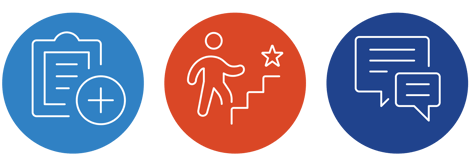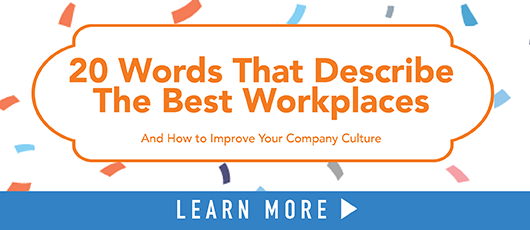Want to create a work environment that employees love? Of course you do! But where do you start?
We've got some interesting insights—straight from the mouths of employees—to help you build a thriving workplace culture that your employees are passionate about.
We surveyed more than half a million employees from companies in our Best Places to Work program. Here are the top 20 words they used to describe their cultures.

Best Words to Describe Company Culture
The following words are ranked by how frequently they were mentioned by employees, from most frequent to least frequent.
1. Fun
2. Challenging
3. Friendly
4. Engaging
5. Rewarding
6. Collaborative
7. Flexible
8. Supportive
9. Exciting
10.Caring
11. Family
12. Professional
13. Busy
14. Fast-paced
15. Innovative
16.Teamwork
17. Motivating
18. Positive
19. Comfortable
20. Integrity
Here are some tips on how to implement a few of these elements into your own culture!
1. Fun
- Provide in-office games, like a ping pong table or board game station.
- Host themed office parties for common holidays.
- Surprise employees by bringing in coffee, catering lunch, or hosting a happy hour.

2. Challenging
- Encourage employees to take on different responsibilities outside their daily tasks.
- Push employees to create challenging stretch goals.
- Use GOOD one-on-one meetings for thought-provoking career discussions.

3. Friendly
- Create a welcoming onboarding experience.
- Hold quarterly, cross-departmental gatherings so employees get to know other teams.
- Assign a culture coach to new hires to teach them how the organization functions and answer any questions.

Get ideas for all 20 elements of the best workplaces by downloading our ebook, 20 Words That Describe The Best Workplaces.
